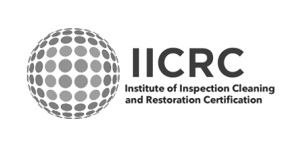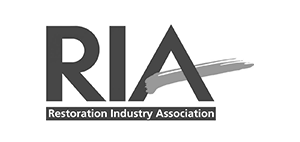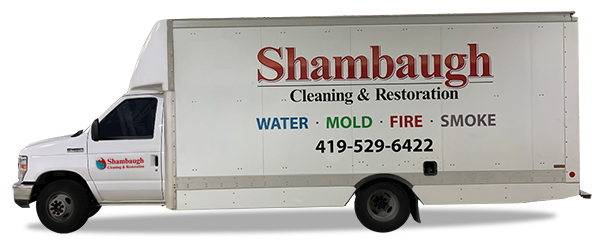Is your home hiding a silent enemy that could harm your health every day? Extreme mold infestations are not just ugly—they’re dangerous. They can cause breathing problems and allergies. Knowing which mold you have is the first step to fixing it.
Mold loves humid places like bathrooms and basements. It can grow almost anywhere, even behind walls. Moisture, bad ventilation, or a leak can make your home a mold paradise. If not treated, you might need extreme methods to get rid of it safely.
Key Takeaways
- Mold thrives in spaces with high humidity levels, typically between 30% and 50%.
- Common mold types include Cladosporium, Aspergillus, and Stachybotrys (black mold).
- Effective mold removal starts with understanding the specific type of mold present.
- A bleach solution, a 50/50 solution of ammonia and water, or white vinegar can treat mold-infested areas.
- Protective gear like an N-95 mask, gloves, and goggles should be worn during mold removal to prevent allergic reactions.
- Proper ventilation and regular cleaning help in preventing mold growth.
Mold Removal Techniques and Safety Precautions
Removing mold from your home needs a careful plan to get the best results and stay safe. The best ways to remove mold include using different cleaning agents and methods for different surfaces.
- For hard surfaces like tiles and windowsills, a mix of detergent and water works well. Scrub the mold off well to remove it completely.
- On porous surfaces like wood, you need to be more careful. Sand the wood first if needed, then clean with a detergent solution.
- Undiluted white vinegar is great for removing mold, especially in kitchens and bathrooms. It’s effective and good for the environment.
- For black mold, a special cleaner with fungicide can help remove it faster and better.
When dealing with mold, it’s crucial to follow strict safety rules to avoid health problems. Wear protective gear like N-95 respirators, long gloves, and safety goggles without holes. Also, keep children and pets away from the mold area.
If you’re thinking about DIY mold removal solutions, learn the steps and what you need:
- First, use a dehumidifier to lower humidity in affected areas before cleaning. Keep humidity between 30% and 60%.
- For severe mold on non-porous surfaces, use a bleach solution with 1% to 5% chlorine. Apply it, wait 15 minutes, then rinse with clean water. Be careful with bleach as it can harm skin and eyes.
- For mold, a 50/50 mix of ammonia and water can work, but never mix it with bleach. Mixing them can create toxic fumes.
- After removing mold, throw away any contaminated items. Clean and dry the area well to stop mold from coming back.
Mold grows in humid places, especially where air doesn’t move well like bathrooms, basements, and kitchens. Using exhaust fans and fixing moisture problems quickly can help prevent mold.
By following these mold removal tips and safety steps, you can keep your home safe from mold’s harm.
How do you get rid of extreme mold?
Dealing with extreme mold needs a detailed plan for safety and success. First, check how bad the mold is and what it has damaged. This includes walls, floors, and outside areas of your home. Knowing the extent helps decide if you need a pro or can do it yourself.
For big mold problems, getting a professional is usually the smart choice. They have the skills and tools to safely and fully remove mold, like toxic black mold. People with allergies, asthma, or weakened immune systems should stay away because mold spores can be very harmful.
In milder cases, you can try these extreme mold cleanup tips:
- For mold on walls, mix one part bleach with four parts water. This can work, but it’s not a lasting solution.
- For a natural option, vinegar and bicarbonate of soda can remove mold stains. But, they might not last as long as special mold cleaners and good air flow.
- Fixing leaks and using dehumidifiers to keep humidity between 30-60% is key to stopping mold.
- Use a moisture meter to check and keep humidity levels in check, stopping mold before it starts.
- If mold has ruined materials like ceiling tiles or drywall, they need to be replaced.
Being aware and proactive is key to beating stubborn mold. Use fans, dehumidifiers, and fix moisture issues to keep mold away. By tackling moisture and mold quickly, you can keep your home safe and healthy.
Conclusion
To get rid of severe mold, you need to clean well, stay safe, and prevent it from coming back. Mold loves damp places like bathrooms and basements. It spreads through tiny spores that can harm people, especially babies, the elderly, and those with weak immune systems.
When mold grows a lot, you must check it often and fix it fast. Signs like fuzzy growths or bad smells mean mold is there. It can cause allergies, asthma, and lung problems. Using strong cleaners and following safety rules helps remove mold safely.
Stopping mold from growing back is also key. Fix leaks, clean gutters, use dehumidifiers, and keep air moving. These steps help keep humidity low, which stops mold. By acting quickly and using these steps, you can keep your home safe and healthy.






